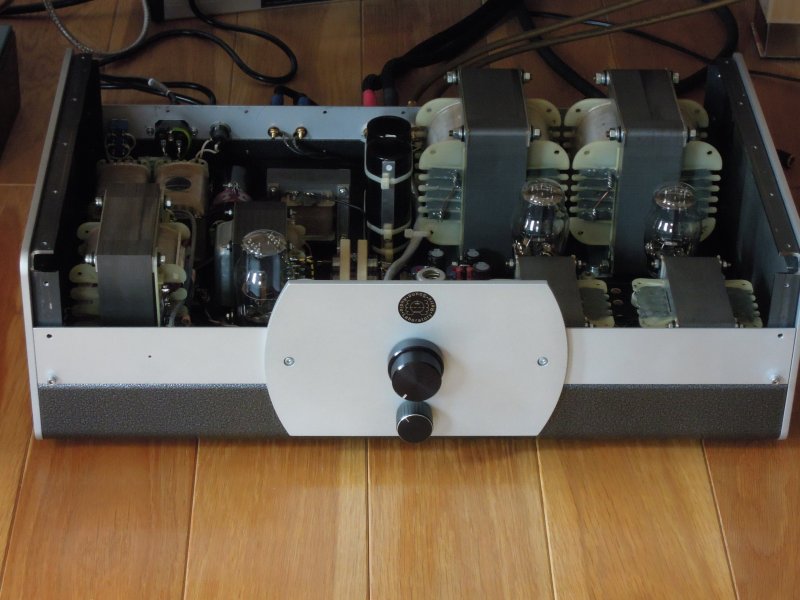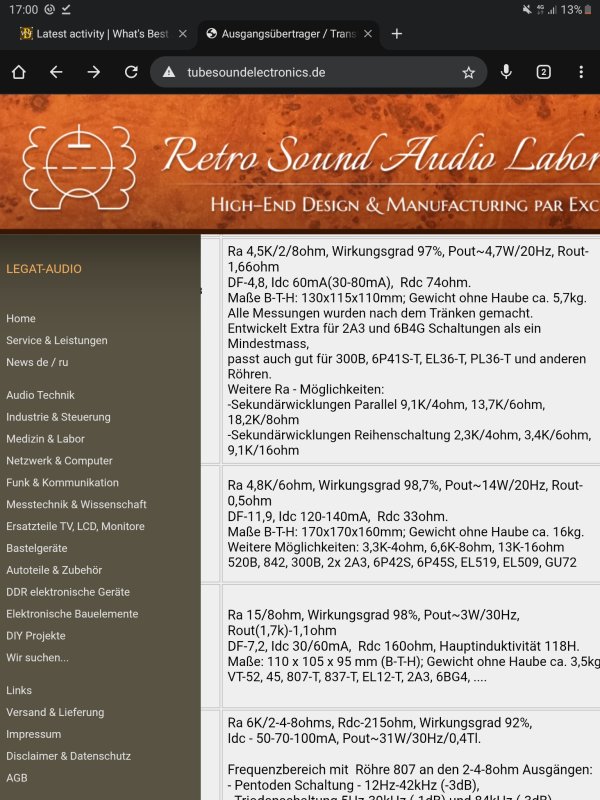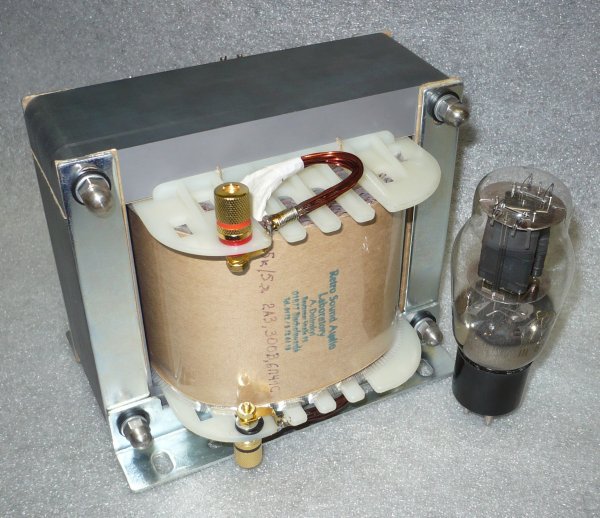Can we see , 20hz from a CH size room is pretty close to a 1969 moon landing with reception ..Wrong, just wrong. I have the measurements to show it’s wrong. My in-room RTA measurements show my bass goes to 20 Hz…with a SET.
Ron’s New System
- Thread starter Ron Resnick
- Start date
You are using an out of date browser. It may not display this or other websites correctly.
You should upgrade or use an alternative browser.
You should upgrade or use an alternative browser.
What about those who have actually seen how an SET measures at 20hzWell, when people haven’t owned a SET nor appropriate speakers for a SET and still feel compelled to comment…
For the record , the best part of a really good SET amp is the bass , fantastic jump and transition ..
Well, I can't help you with your moon landing denial issues...Can we see , 20hz from a CH size room is pretty close to a 1969 moon landing with reception ..

Oh no, those are just artifacts of your imagination if you listen to some WBF members...What about those who have actually seen how an SET measures at 20hz
For the record , the best part of a really good SET amp is the bass , fantastic jump and transition ..
When you want see mesurements i ask a friend he will bring it to me then we do. Problem that thing weights 70kg. ultrastable 3.5 watt 2A3.What about those who have actually seen how an SET measures at 20hz
For the record , the best part of a really good SET amp is the bass , fantastic jump and transition ..
Then we'll see if 20hz works with full throttle. We'll see if he wants to tow the thing I can't promise anything, it's not my amplifier..
OPT is specified with 6hz-77khz- 3db.
Specs
Ra 4.8K/6 ohms, efficiency 98.7%, Pout ~14W/20Hz, Rout 0.5 ohms
DF 11.9, Idc 120-140mA, Rdc 33 ohms.
Dimensions W-D-H: 170x170x160mm; weight without hood approx. 16kg.
Other options: 3.3K-4 ohms, 6.6K-8 ohms, 13K-16 ohms
520B, 842, 300B, 2x 2A3, 6P42S, 6P45S, EL519, EL509, GU72

Last edited:
The size of those output transformers tells the story. For 3.5 Watts they are simply huge; they look to be rated at 50 Watts. Clearly the designer understood the problem! This is one of the better spec'ed output transformers I've seen that can be used for a 300b:When you want see mesurements i ask a friend he will bring it to me then we do. Problem that thing weights 70kg. ultrastable 3.5 watt 2A3.
Then we'll see if 20hz works with full throttle. We'll see if he wants to tow the thing I can't promise anything, it's not my amplifier..
OPT is specified with 6hz-77khz- 3db.

Its a good 6" tall. It has to be this size in order for the finished amp to make any bass at all, but even at this size full power at 20Hz without obviously higher distortion is simply not on the table. I'll be very surprised if the amp even can make full power at that frequency! FWIW this isn't my first SET build. I've been fiddling with them for about 25 years.
I only know the type of transformer he uses. How it's wound and the gear ratio. I don't know for 2A3 tubes. I must ask.The size of those output transformers tells the story. For 3.5 Watts they are simply huge; they look to be rated at 50 Watts. Clearly the designer understood the problem! This is one of the better spec'ed output transformers I've seen that can be used for a 300b:
View attachment 159268
Its a good 6" tall. It has to be this size in order for the finished amp to make any bass at all, but even at this size full power at 20Hz without obviously higher distortion is simply not on the table. I'll be very surprised if the amp even can make full power at that frequency! FWIW this isn't my first SET build. I've been fiddling with them for about 25 years.
Ausgangsübertrager / Transformatoren / Röhren-Verstaerker-Upgrade / Steuerung / Automation
Audio Interstage & Output Transformers, Exklusive Tubes Audio Amplifiers, Steuerung, Automation, Labortechnik
www.tubesoundelectronics.de
(...) Specs
Ra 4.8K/6 ohms, efficiency 98.7%, Pout ~14W/20Hz, Rout 0.5 ohms
DF 11.9, Idc 120-140mA, Rdc 33 ohms.
Dimensions W-D-H: 170x170x160mm; weight without hood approx. 16kg. (...)
Are you sure about the efficiency? Considering copper and core losses I find hard to believe that a gaped transformer with a 20-20KHz bandwidth can have such efficiency.
McIntosh did it with their bifilar wound Transformers from the 60’s , wait a min , not sure if as high as 97% thats pretty high!Are you sure about the efficiency? Considering copper and core losses I find hard to believe that a gaped transformer with a 20-20KHz bandwidth can have such efficiency.
Last edited:
Ok well help me with your in room measured responses , take your time its only 2025 …Well, I can't help you with your moon landing denial issues...
One look @ 20hz squarewave tells the tale , feel free to post …The size of those output transformers tells the story. For 3.5 Watts they are simply huge; they look to be rated at 50 Watts. Clearly the designer understood the problem! This is one of the better spec'ed output transformers I've seen that can be used for a 300b:
View attachment 159268
Its a good 6" tall. It has to be this size in order for the finished amp to make any bass at all, but even at this size full power at 20Hz without obviously higher distortion is simply not on the table. I'll be very surprised if the amp even can make full power at that frequency! FWIW this isn't my first SET build. I've been fiddling with them for about 25 years.
After over 8000 posts on @Ron Resnick ‘s system, has @Ron Resnick been significantly influenced in his thinking about his “new” system?
I have to say that trying to read through this thread, it’s hard to understand just what might have been learned.
I have to say that trying to read through this thread, it’s hard to understand just what might have been learned.
Ask him when he has his website back online he is currently modernizing it.Are you sure about the efficiency? Considering copper and core losses I find hard to believe that a gaped transformer with a 20-20KHz bandwidth can have such efficiency.

Arkadii Dolinskyi
Birkenroderstr. 15
01877 Demitz-Thumitz
Telefon: +49(0)15224430670
E-Mail: info@tubesoundelectronics.de
I believe Ronny has decided to take annual leave... exactly like you said, all this unwanted noise floor, must have cause the stylus to jump off! Oh well, he'll be back after a break I reckon.I heard it too when I first heard my corner horns with ML2 amps in Utah. The room was poor due to its modern sheet rock construction and 16" OC studs. Very hollow sounding. I moved the speakers out into the room away from the corners and lost most of the bass. And yet there was that midrange magic. That listening experience got me interested in that specific amp/speaker combination. With the corner reinforcement to the open backed speakers, my room worked fine. The amps simply could not drive the Magicos, but the Lamm M1.1 hybrids sounded superb on the Magicos. It was a great balanced sound, just not quite the same magic as the SET. That is why I went amp first, then speaker.
Ron's poor thread has been completely derailed with this SET and Class D and horn chat. Where is @RonResnick ? Ron, what is the latest with your system?
Quite a massive debate over dis & dat... SET tooobs glowing wildly and others wagging their tails with ears perked up for another serious listen... to music or the gear?
I just rather enjoy those fine tooons. Be well y'all. Keep safe, and look after your health! Not the system. The gear will always prevail, our hearing doesn't.
Cheers, RJ
Actually 20Hz on its own isn't enough as you can see from the photo, which is a fraction of a Watt. You need to show it at the full power of the amp to really see what's going on. Finishing that project is still a ways down the road.One look @ 20hz squarewave tells the tale , feel free to post …
This photo is a 20Hz square wave; the top trace being the transformer loaded at 8 Ohms and the bottom being my 'trusty' generator, which was clearly having a problem with its output coupling cap.

Ralph, what is the significance of needing to see the measurement at full power? Do listeners often push their amps when playing music in their rooms to full power? I am guessing I rarely ever use more than 10% of my amps full power, even when I listen very loud.
The issue is that bass notes consume the most power- the lower you go the more power needed. Some people, who have under-powered amps for the speakers they are using, may well run the amp close to full power quite a lot. In cheaper systems, this issues often leads to damaged tweeters.Ralph, what is the significance of needing to see the measurement at full power? Do listeners often push their amps when playing music in their rooms to full power? I am guessing I rarely ever use more than 10% of my amps full power, even when I listen very loud.
A full power measurement tells a lot about how an amplifier is doing. Hopefully the amp isn't used at full power since the amp, if you want the most out of the investment you have in it, should be pretty well loafing, even if its a powerhouse transistor type with which you could use for welding.
The thing is in the bass there's things you might not be aware of that can gobble amplifier power, like record warp or material that the speakers can't reproduce. Stuff like that can cause the amp to work a lot harder than you think it is. This is harder to see on higher efficiency speakers since the woofers tend to have less excursion.
Doubt you are only using 10% on Peaks …!Ralph, what is the significance of needing to see the measurement at full power? Do listeners often push their amps when playing music in their rooms to full power? I am guessing I rarely ever use more than 10% of my amps full power, even when I listen very loud.
There’s enuff Tilt there to tell the full story, the output looks better than the input..Actually 20Hz on its own isn't enough as you can see from the photo, which is a fraction of a Watt. You need to show it at the full power of the amp to really see what's going on. Finishing that project is still a ways down the road.
This photo is a 20Hz square wave; the top trace being the transformer loaded at 8 Ohms and the bottom being my 'trusty' generator, which was clearly having a problem with its output coupling cap. View attachment 159316
or
did you mean the top trace was the generator?
| Steve Williams Site Founder | Site Owner | Administrator | Ron Resnick Site Owner | Administrator | Julian (The Fixer) Website Build | Marketing Managersing |


